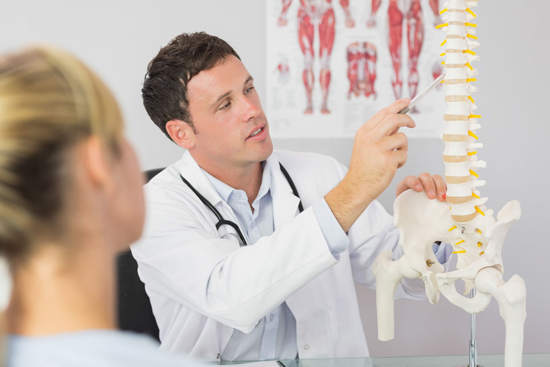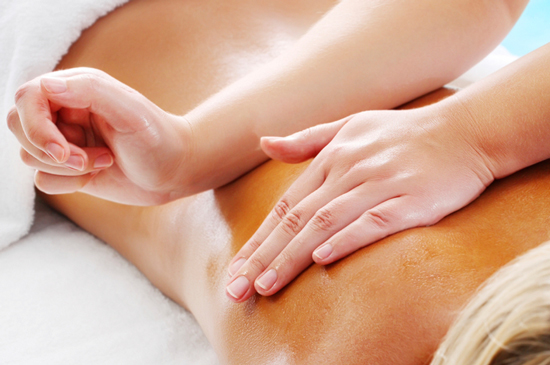That Is Natural Health? A Comprehensive Guide to Living Healthy (4)
Read the third part of this article
Chiropractors

The field of chiropractic medicine focuses on the neuromusculoskeletal system, or in other words the nerves, muscles, and skeleton. They are concerned with how the spine and its alignment affects overall health. They perform spinal manipulations or adjustments to correct alignment problems.
These adjustments not only reduce pain but can improve overall health. In general, many chiropractors believe in a natural approach to healthcare, supporting good health practices like nutrition, exercise, therapies like massage, and natural supplements.
Chiropractors believe in the body’s ability to heal without drugs or surgery.
In the US, chiropractors must complete at least a 4-year university degree, 1000 hours of clinical training, and they must receive licensing in the state or province they practice in.
Osteopathic Doctors
Like chiropractors, osteopaths are trained to focus on the neuromusculoskeletal system, but they take a whole-person approach to healthcare, looking at all of the body’s interconnected systems.
Whereas chiropractors focus on the spine, osteopaths focus on physical manipulation of the entire body’s muscles and skeletal system for optimizing health. They focus on improving health without drugs and unlike traditional medical doctors, treat the whole person rather than just addressing the specific presenting issue.
A Doctor of Osteopathy (D.O.) is a licensed, board-certified medical doctor who attended a medical college of osteopathy. There are more than 100,000 osteopathic doctors in the U.S., and they are licensed to practice in all 50 states in the U.S.
Homeopaths
Like other natural health practitioners, homeopathic practitioners also embrace a natural, holistic approach to healthcare and take a comprehensive history of the patient and his or her condition.
Homeopathic care follows three principles:
1. Like cures like: prescribe a natural substance that is similar in nature to the condition. The goal is to help the body heal itself.
2. Minimum dose: prescribe the least amount of a medicine needed to heal an issue.
3. Single remedy: give people one treatment at a time.
Homeopathy is a popular but controversial form of complementary medicine, mainly because the mode that homeopathy purports to work seems to go against what scientists know about science. According to the NIH National Center for Complementary and Integrative Health, “Several key concepts of homeopathy are inconsistent with fundamental concepts of chemistry and physics.”
Despite that, reviews of studies have found the positive effects of homeopathic treatment for certain conditions – including acute diarrhea, flu, and allergies – cannot be explained by a placebo effect alone (the placebo effect is when people get better because they believe to be given a very good cure, but actually they are receiving some ordinary neutral pill, such as a sugar pill).
Homeopaths come from a wide variety of backgrounds. There are currently only five colleges in the U.S. and one in Canada which provide a four-year program in homeopathy. However, Naturopathic Doctors (N.D.s) receive training in homeopathy as part of their medical training. Other colleges and institutions offer shorter training programs and certificates in homeopathy.
Natural Health Coaches and Dieticians
You can also go to natural health coaches or dieticians which have a wide variety of certifications and training.
Registered Dieticians (R.D.) or Registered Dietitian Nutritionists (R.D.N.) have a minimum of a Bachelor’s degree from an accredited college or university, and they also finished a certified practice program offered by the Accreditation Council for Education in Nutrition and Dietetics (ACEND) of the Academy of Nutrition and Dietetics and passed an exam.
Other types of nutritionists or dieticians include Certified Nutrition Specialist, Certified Clinical Nutritionist, Holistic Nutritionist, and Nutritional Therapy Practitioner.
Also, some individuals become health coaches to support other people on the journey to health and wellness, often after having an experience with it in their own lives. Not all of these healthcare practitioners take a natural health approach, so you will have to do your research into each provider.
Try These Natural Health Therapies and Modalities
Whether you are engaging in natural health self-care or you are under the care of a healthcare provider, there are dozens of alternative, natural health therapies that can be used for various conditions, or simply to support overall physical and mental health. Some of the most popular are below.
Massage

Massage is one of the oldest, most well-known and most used alternative therapies. Not only can massage relax you, but it also has specific health benefits.
Studies have found that massage can reduce pain, decrease anxiety and depression, increase alertness, and improve the immune system. Two-thirds of hospitalized patients attributed their greater ability to move around, higher energy levels, and speed of recovery to getting massages during their stay.
How do massages help? Physiologically, they relax muscles and increase blood and lymph circulation. Some studies have found massage boosts the immune system in both sick and healthy people.
One study found massage increased the hormone oxytocin, sometimes called the love hormone, and decreased levels of cortisol and adrenocorticotropin, hormones produced by the pituitary gland during stress.
Ayurveda
Ayurveda is an ancient system of medicine from India. Ayurvedic medicine takes the approach that the mind and body are intricately interconnected, and the mind has a strong ability to heal the body.
According to Ayurveda, people have three different constitutions, or “DOSHA-s” which means life force:
– KAPHA types are dominated by water and earth, and are typically strong and stable as long as they exercise regularly, but may tend towards weight gain without exercise. To be balanced, KAPHA-s may need to be motivated or energized through the various Ayurvedic therapies, including herbs, food, and mind-body practices.
– PITTA DOSHA-s are ruled by fire and water elements, are typically medium build, have ruddy skin, and can be competitive and sometimes irritable. To find balance, they need to manage their fiery tendencies.
– The final DOSHA type is VATTA, dominated by light and air, and who tend towards a light, airy constitution. They think on their toes, are fast-moving, and creative, but may tend towards anxiety or fatigue, and may need to find ways to ground their airy energy.
Ayurvedic practitioners use PANCHAKARMA, a system of cleansing different body systems using essential oils, massage, and foods. Meditation, yoga and deep breathing, getting outside in nature, getting adequate exercise and sleep, and including all six tastes in every meal (sweet, salty, sour, pungent, bitter, and astringent) are used to help bring balance to the body and its systems.
Acupuncture, Acupressure and Traditional Chinese Medicine
Traditional Chinese Medicine (TCM) was developed more than 2,500 years ago in China, and involves understanding and redistributing the body’s energy force, called chi, along meridians or channels in the body.
TCM healers use herbs and medicines (some of which come from endangered species, such as tigers or rhino horns), as well as mind-body practices like tai chi and acupuncture. In acupuncture, practitioners will insert tiny needles along the body’s meridians to heal an ailment.
There are few studies accessible to the western world that have systematically evaluated TCM, making it difficult to evaluate scientifically. However, some studies have started looking at the disease-fighting capabilities of certain TCM herbs.
Although scientists do not understand how it works, several studies have shown that acupuncture treats chronic pain more effectively than no treatment or “sham” acupuncture treatments (placing needles on non-meridian points). Not only that, some brain imaging research has found that stimulating specific acupuncture points activated specific parts of the brain.
Acupressure is a bodywork technique that involves putting pressure on the meridian points associated with a particular ailment, instead of using needles as they do in acupuncture.
Aromatherapy
Scent is one of our most prized senses, and it can be used to improve health and well-being. Massage therapists often add in aromatherapy into their practice, but this is a great therapy to do self-care. There are hundreds of essential oils that you can use for various needs, and these are sold at grocery stores, online and specialty stores.
Lavender oil can reduce anxiety and improve sleep. Inhaling lavender also lessened the effects of premenstrual syndrome (PMS) in women.
Orange oil was found to lower heart rate and decrease stress for students studying for exams.
Peppermint oil not only improves muscle relaxation and achy joints, inhaling peppermint oil can reduce nausea, reverse mental fatigue and improve physical performance in both mice and men.
Natural Health Wrap-Up
There are a number of other alternative and complementary natural therapies, but what they have in common is that they look to natural herbs, nutrition, and lifestyle changes like exercise to maintain wellness while seeking to avoid costly and invasive surgeries or treatments.
Natural therapies can be empowering because, although many are not as well-researched as some conventional medical treatments, they typically have fewer side effects.
However, always be sure to research the quality of the healthcare or therapy provider, natural health supplements, or treatments you are interested in. Check reviews, read as much as you can, and be an informed decision-maker about your own healthcare.
There are many simple, natural ways to improve your health and make you happier every day.
yogaesoteric
December 13, 2018
